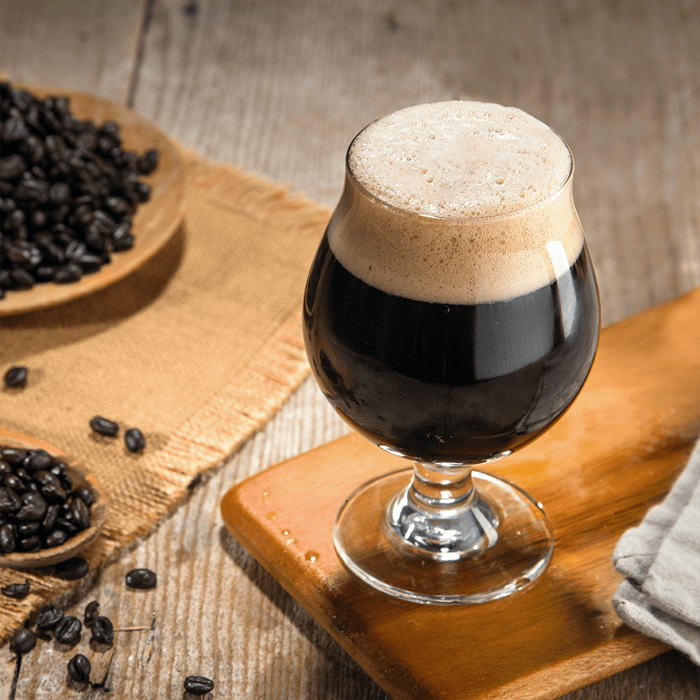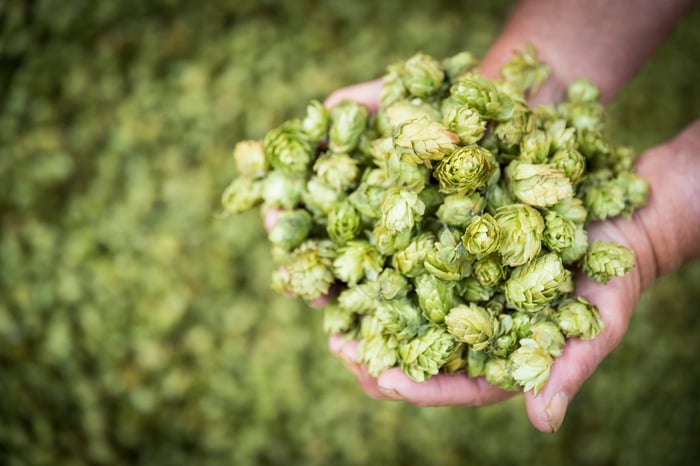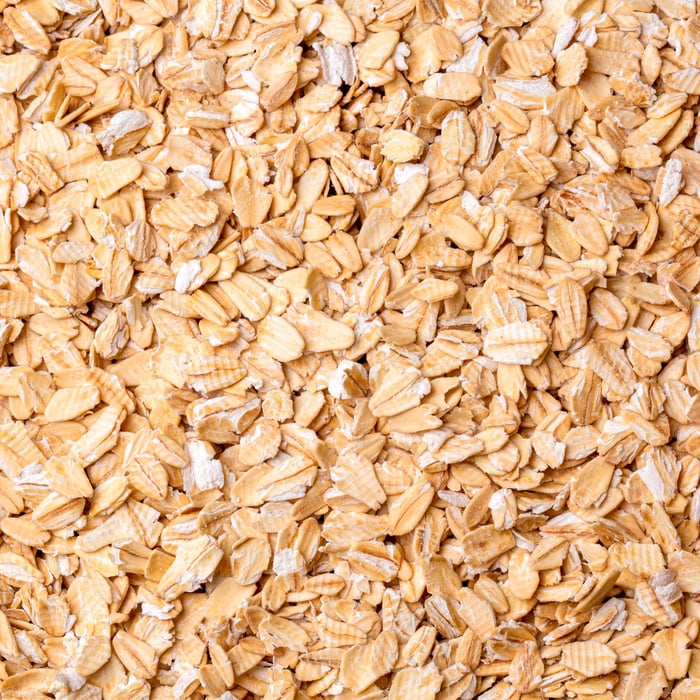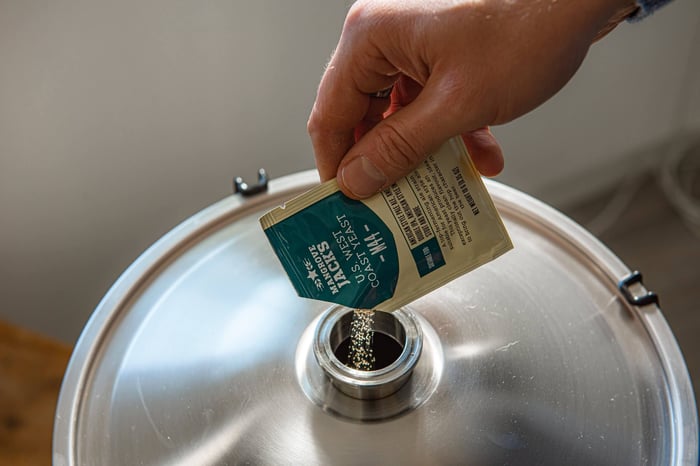Right then, let's talk coffee beer – one of the most rewarding yet challenging adventures in homebrewing. Our head brewing team has spent years perfecting their approach to coffee integration, and frankly, their results speak for themselves. Whether you're after a traditional coffee stout or something completely bonkers like a coffee bitter, we've got you covered.
Where It All Started: The Coffee Beer Revelation
Our coffee brewing journey began with what we call "the beer that changed everything" – Founders Breakfast Stout. "Honestly, that first sip was a proper eye-opener," we recall. "The way those Sumatra and Kona beans worked with the chocolate and roasted malt character was nothing short of brilliant. It showed us what was possible when you really understand your ingredients."
Our experiments started with the obvious candidates – stouts and porters – but a chance encounter with a homebrewed coffee lager completely shifted our perspective. "Picture this: you're expecting a straightforward lager, and suddenly there's this gorgeous coffee character that shouldn't work but absolutely does. That's the kind of brewing that gets us excited – taking people somewhere they didn't expect to go."
Selecting Your Canvas: Which Beer Style Works Best?
The Classics: Why Stouts Rule the Roost
There's a reason most commercial coffee beers are stouts – the match is practically made in heaven. Your typical stout brings dark chocolate notes, proper roasted grain character, hints of dark fruit, and nutty undertones that complement coffee beautifully. Many stouts already have coffee-like qualities from their grain bills before you add a single bean, so you're building on solid foundations.
Beginner's advantage: If this is your first rodeo with coffee brewing, stick with stouts. The complex flavour profile gives you plenty of room to play without overwhelming the base beer.
The Adventurous Route: Light Beer Surprises
Fancy a proper challenge? Try coffee in a pale beer. Done well, it's absolutely brilliant – like a magic trick that actually makes sense once you taste it. Think about successful coffee wheat beers or the growing trend of coffee session IPAs across British craft breweries.
Word of warning: Coffee beans contain oils that'll affect your mouthfeel and can play havoc with head retention. Coffee also brings its own bitterness, so factor that into your recipe calculations. Planning a wheat beer? That lovely fluffy head might not stick around if you're not careful. Working on a bitter? Make sure the coffee doesn't clash with your hop character.
Lagers work beautifully with coffee, but their delicate flavour profiles mean there's no hiding mistakes – you need a steady hand and plenty of patience.
Coffee Selection: Your Flavour Toolkit
This is where things get properly interesting. Coffee isn't just coffee – you've got everything from single-origin beans to flavoured varieties, each bringing something different to the party. Some coffees have fruit characteristics that can add fascinating complexity to your brew.
Our method: Before committing to a beer style, brew yourself a proper cup with your chosen beans. Taste it black, understand what it brings to the table, and let that guide your beer choice. You might discover your Ethiopian beans have bright fruit notes that would be stunning in a saison rather than that imperial stout you were planning.
Seasonal thinking: Consider British drinking patterns too. A light coffee wheat beer might be perfect for summer festivals, whilst rich coffee porters suit those long winter evenings by the fire.
Integration Techniques: Getting Coffee Into Your Beer
The "Dry Beaning" Approach
Similar to dry hopping, this means adding whole beans straight to your fermenter, preferably in a sanitised hop bag for easy removal. It's straightforward and effective, though not necessarily the most efficient method for extracting flavour.
Critical point: Sample regularly using sterile equipment. Once you hit your target flavour, remove those beans or rack the beer immediately – there's a fine line between perfect extraction and overpowering bitterness.
Cold Steeping Method
Many brewers swear by cold extraction – soaking beans in room temperature water for 24-48 hours, then adding the liquid to your fermenter. This method pulls lovely coffee character without the harsh edges you can get from hot extraction.
Why it works: You get beautiful coffee flavour without the risk of extracting aggressive tannins that can make your beer taste like you've been chewing bark.
Hot Coffee Addition
You can brew coffee normally, let it cool completely, and add it during fermentation or before packaging. Hot water extracts flavour efficiently but can pull harsh compounds that'll dominate your finished beer.
Best practice: If you're going the hot route, keep brewing time short and cooling rapid to minimise harsh extraction.
Our Hard-Learned Lesson
"Adding instant coffee granules straight to the fermenter was possibly our worst brewing decision ever," we admit with a grimace. "Filtering those particles out was an absolute nightmare, and drinking the result was like munching coffee grounds between every sip. Some mistakes you only need to make once – trust us on this one."
Timing Your Coffee Integration
There's no magic formula here – it's all about your palate and what you're trying to achieve. If you're adding beans to your fermenter, sample every couple of days until you reach that sweet spot where the coffee enhances rather than dominates.
Adding brewed coffee before packaging? Start small and work up. Take a measured sample of your finished beer and add calculated amounts of your coffee preparation until you nail the flavour balance, then scale up accordingly.
Professional tip: Keep detailed notes. What worked brilliantly in your porter might be completely wrong for your next coffee experiment, but those notes will save you time and ingredients down the line.
British Coffee Beer Innovation
The British craft scene has embraced coffee brewing with typical enthusiasm and creativity. From London's coffee porter pioneers to Scotland's coffee-infused wee heavies, there's inspiration everywhere. Consider collaborating with local coffee roasters – many are keen to work with brewers and can offer insights into extraction techniques and flavour profiles.
Regional inspiration: Think about British coffee culture – from morning flat whites to afternoon espressos. How might these preferences inform your brewing choices? A coffee mild might reflect our preference for balanced, sessionable beers, whilst a coffee barley wine could showcase our love for complex, contemplative brews.
Your Coffee Brewing Adventure Awaits
Coffee brewing is fundamentally about curiosity and willingness to experiment. Whether you're crafting a traditional coffee stout or venturing into uncharted territory with coffee bitters, remember that every successful coffee beer started with someone asking, "What if this actually works?"
The key is understanding your ingredients, respecting their individual characteristics, and being patient enough to let them work together properly. Coffee and beer have been bringing people together for centuries separately – combining them just doubles the pleasure.
Grainfather Team










